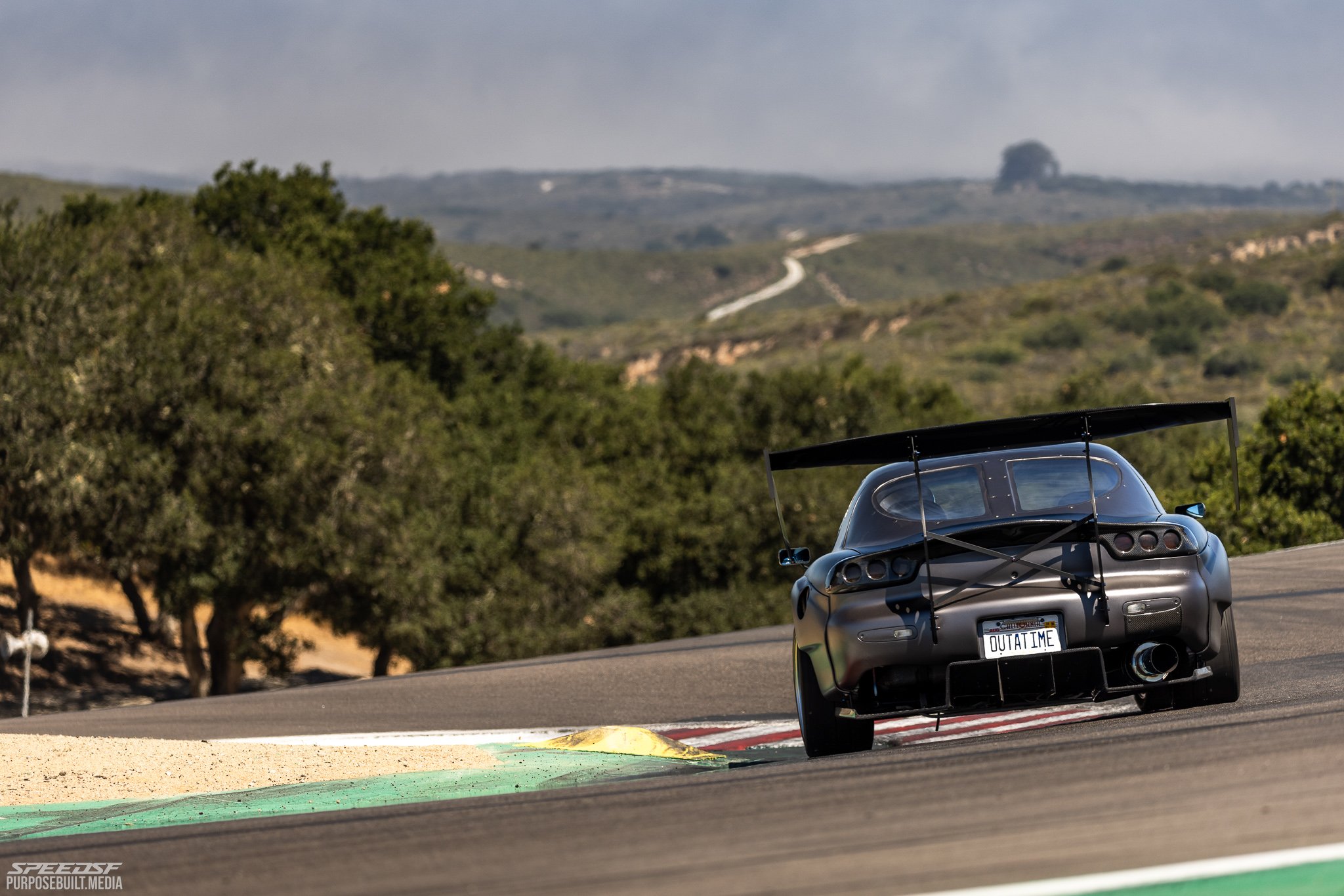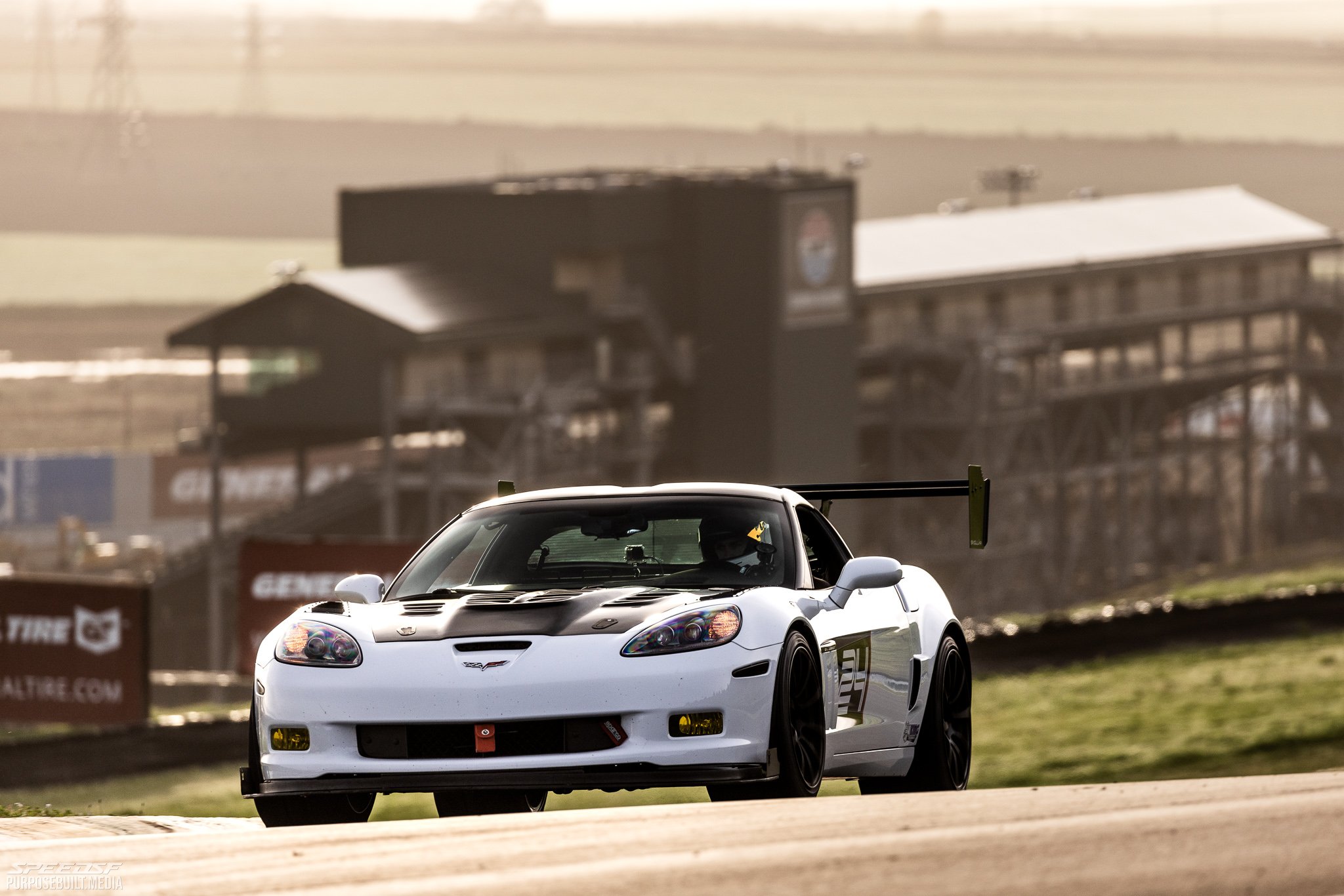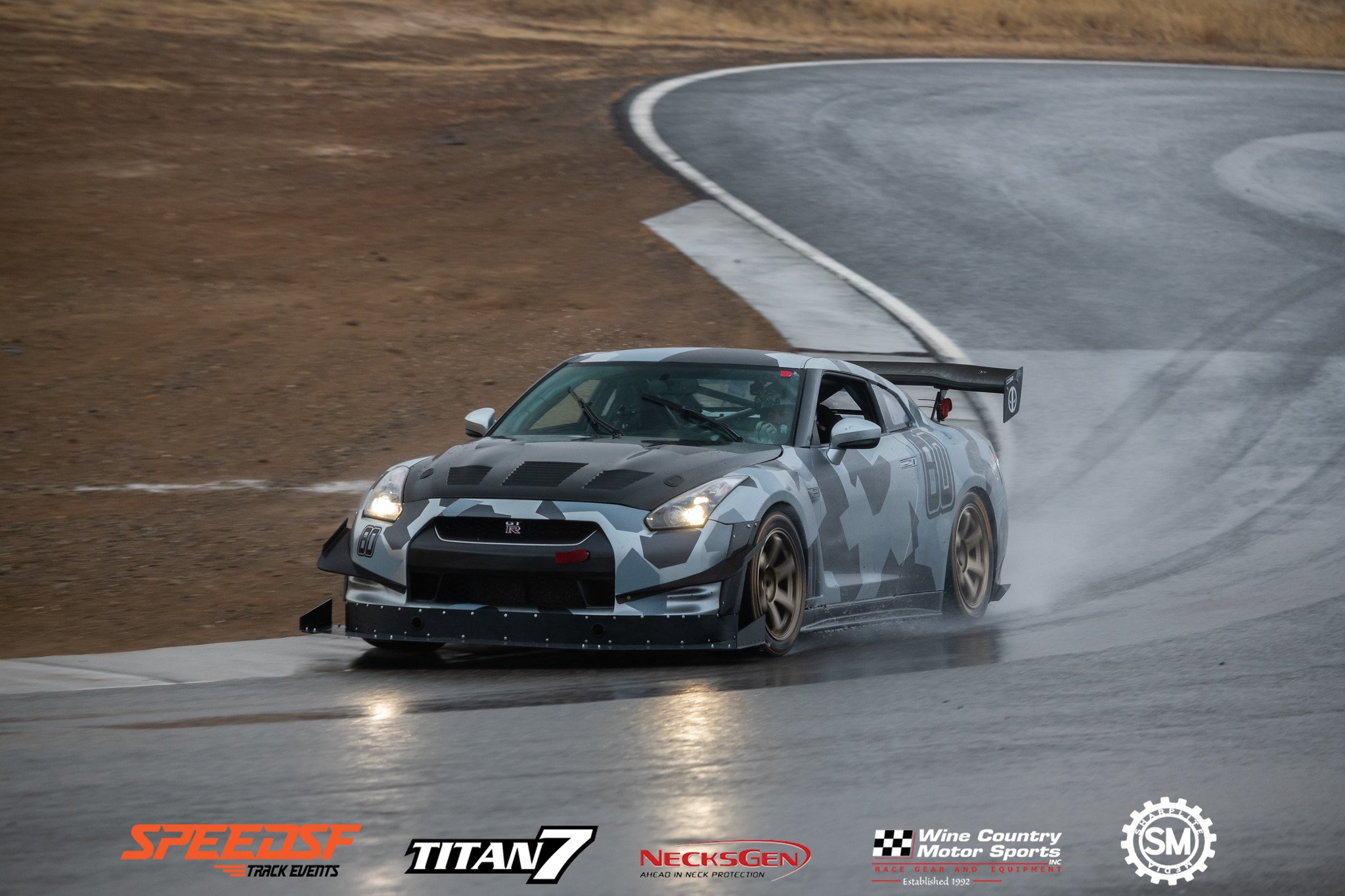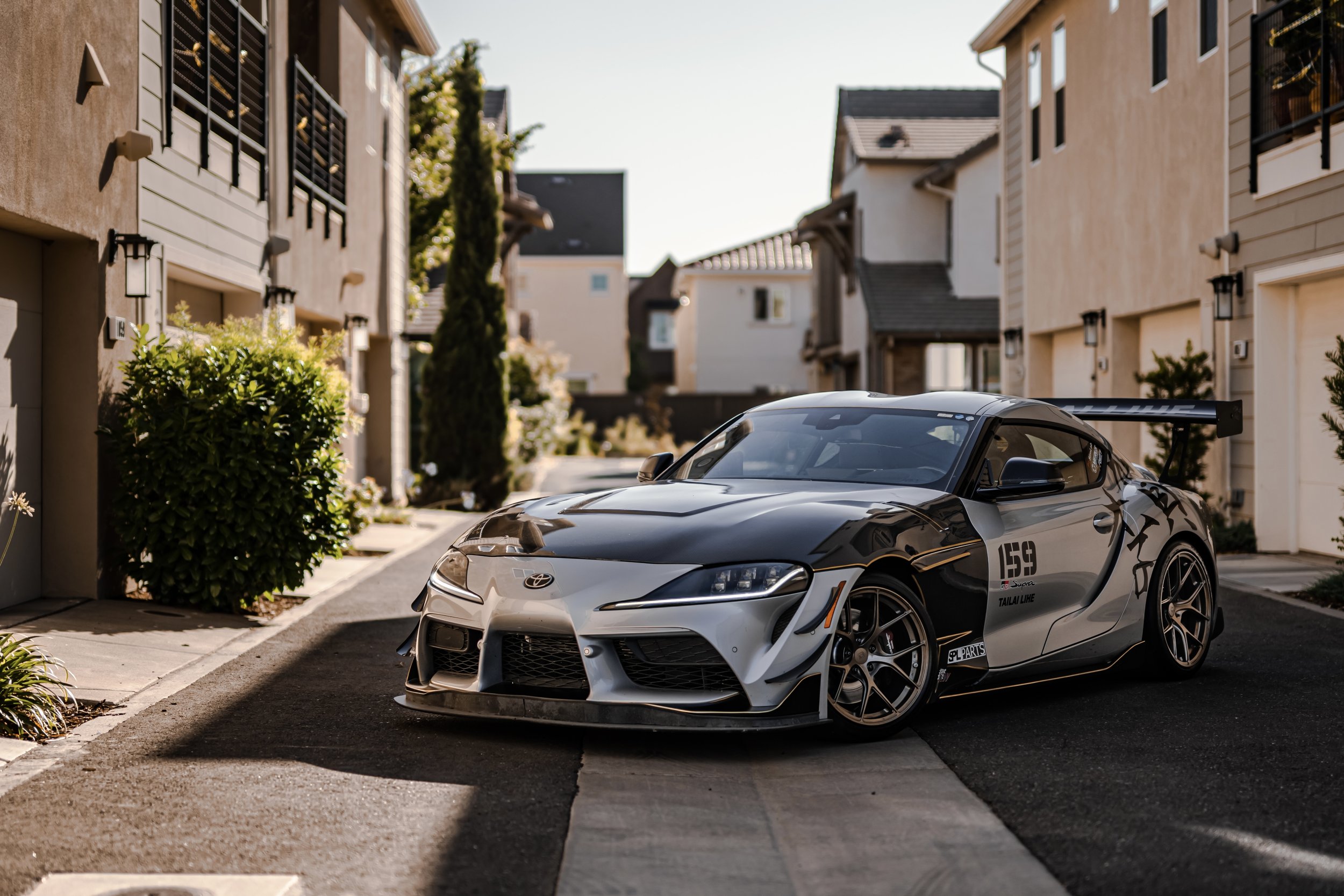
SpeedSF Blog
Every Build Has a Story – Meet the Cars of SpeedSF

Hao’s Supra: One Fell Swoop
After a year wrestling with a heavyweight M4, Hao Wang decided a Supra would be the smaller, more nimble track car he was after. With an ex-GT500 mechanic guiding him, he overhauled the entire suspension and added top-shelf aero to help this stock power car turn remarkable times with relatively little effort.

Nikhil’s E30: Nikhil and Diming
Convinced that track driving could be done on a strict budget, Nikhil Kovelamudi started crunching numbers. By making upgrades only when totally necessary and putting the majority of his allocated money to entry fees, he’s been able to set truly respectable times in a very ordinary E30 — and he’s acquired his skill in short time.

Steve’s Impreza: Simplicity Trumps Traction
With an emphasis on weight reduction and simplicity, Steve bought this bare-bones 1993 Impreza and swapped in the EJ20 from an 2000 USDM WRX, but only the motor — no four wheel-drive here. Thanks to a thoughtful selection of parts, it can put turbo power through the front wheels alone without issue.

Justin’s Trans Am: Party Animal
With a hope for a powerful head-turner with classic styling, Justin Hertel picked up this 1988 Trans Am and swapped an LSA motor into it. As he learned, big power comes with its setbacks.

Spencer’s GT3: Scoping New Territory
Eager to track a Porsche but worried about the expense, Spencer Kimball had to consider if it was worth leaving his E92 M3 behind for a lightly used 991.1 GT3. As he learned, the process wasn’t nearly as painful as he worried it’d be.

Justin’s FC3S RX-7: Displaced Wankel
Justin Merritt’s desire to keep up with the Mustangs pushed him to ditch his FR-S for an LS1-swapped RX-7 in need of some TLC. With a little bit of work, he’s made the Mazda into a surprisingly approachable machine with plenty of untapped potential.

Connor’s E36: Standing on Solid Ground
After transitioning into HPDE from autocross, Connor Lydon recognized how taking the next step into time trials would be made easier by starting with a sorted car.
This IP-winning E36 M3 came to Connor already proven, and with a little massaging as well as a few chassis mods, it’s been able to set remarkable times with a modest amount of power.

Brandon’s Alfa 4C: Inconspicuous Exotic
Tired of Spec Miata and needing to build an unusual track car, Brandon picked up this Alfa 4C and gave it all the chassis mods needed to help it shine on the road course.

Joe’s RX-7: Long Time Coming
As problematic as the rotary engine has been for Joe Salinas, he's had a hell of a time modifying his thirteen different Mazda RX-7s — especially this track-only widebody FD3S.

Cory’s C6 Grand Sport: Safe Not Sorry
After Cory Smetzler saw the light during a ridealong in a C6 Z06, he bought a Grand Sport from the same generation. It might not have the biggest motor or the lightest chassis in the lineup, but it has a few features which have offered him peace of mind with small few setbacks.

Alex’s FL5 Type R: Best of Both Worlds
The FK8 was too gaudy, the MX-5 was too cramped, and the FL5 was just right. When Alex was able to bring home a new Civic Type R for the occasional track outing, he knew he’d found the best possible compromise within his budget.

Thomas' Corvette: In Good Company
In only two years, Thomas has learned more than most will grasp in a decade of track days. Having a solid, dependable C5 has helped him put in his time, and having Elite Performance as a resource has made fine-tuning the car so much simpler.

Fenton's Integra Type S: A Change of Heart
While he was on the fence for a while with Acura’s bigger, boatier Integra, the Type S had enough of the right stuff to convince him to try this front-wheel drive super sedan.

Blake's M4: Friendly Firepower
While the F82 still lacks the tuning support some of its predecessors enjoy, the long-wheelbase platform has served Blake Titus as he’s learned the basics of track driving. A satisfying platform that’s “always on the verge of killing you,” as he puts it.

Legend's Supra: Big Brain Move
Legend wisely picked a platform he could grow into. Rather than dump big dough on mods, he did the bare minimum with setup and spent his time in the seat, not underneath the car.

Lief Storer's GT-R: Big Dreams, Bigger Numbers
While Lief started out this ambitious build with a slightly different destination in mind, he ended up doing what so many GT-R tuners do: chase big numbers. In his case, however, he wasn’t after four-digit power figures; weight and lap times were the numbers he was preoccupied with.

Thunderhill Logistics: Where to Stay, Where to Eat, How to Beat the Heat
With plenty of options for food and lodging, reasonable track fees, and plenty of ways to beat the summer heat, a successful trip to Thunderhill only requires a quick review of the information listed here.

Tailai's Supra: Keep it Simple, Keep it Sane
After blowing up an M3’s engine, Tailai Lihe realized power wasn’t everything. With this car, he kept the B58 stock, and instead prioritized seat time and cornering speeds.

Justin's IS F: Rekindling An Old Romance
After a seventeen-year sabbatical from racing, Justin Munoz picked up a capable sedan that, over the last few years, has helped him fall back in love with motorsport.

Elie's E46 M3: Not Too Much, Not Too Little
Though the car has a reputation as being a pricey pain in the ass, Elie Mansour’s proven that the E46 M3 is reliable as anything—and faster than 70% of most track toys—when given the right sort of TLC.
